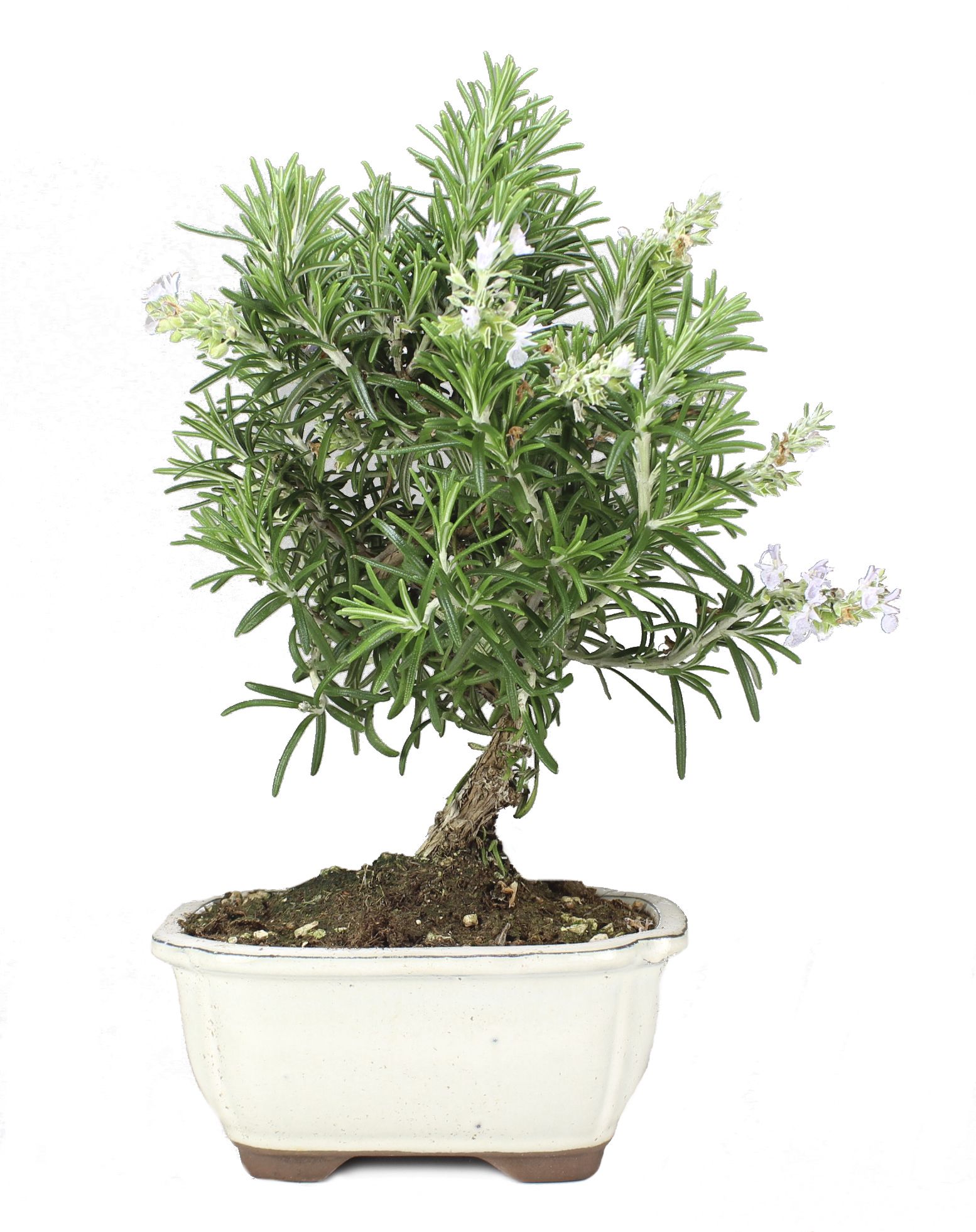Characteristics
Aromatic, woody shrub, with small and very abundant evergreen leaves. The flowers are pale violet blue, pink or white, very aromatic, located at the top of the branches.
Location
Outdoor, in full sun throughout the year.
Watering
This type of bonsai is adapted to periods of drought and little water. Irrigation needs to be controlled because these bonsais could be damaged by an excess of water.
Fertilization
Spring and autumn. It is preferable to use organic fertilizers, favouring and protecting mycorrhizae.
Re-potting
Every 2 to 3 years, in spring.
Substrate
A mixture of 6 parts of Akadama, with 4 parts of volcanic gravel can be used; otherwise Mistral Bonsai TERRABONSAI can also be used.
After transplanting it is convenient to water with a solution of VITABONSAI from Mistral Bonsai, to accelerate the recovery of the tree.
Pruning and pinching
Pruning
At the end of winter. Very sensitive to strong pruning, always leave some green branch.
Pinching
Throughout the growing season we can perform light pinching.
Wiring
Throughout the year, better in spring.
Curiosities
It is a medicinal and aromatic plant that can be used in many ways to maintain and restore health. In addition, it can be included as a spice in recipes for its gastronomic qualities.

